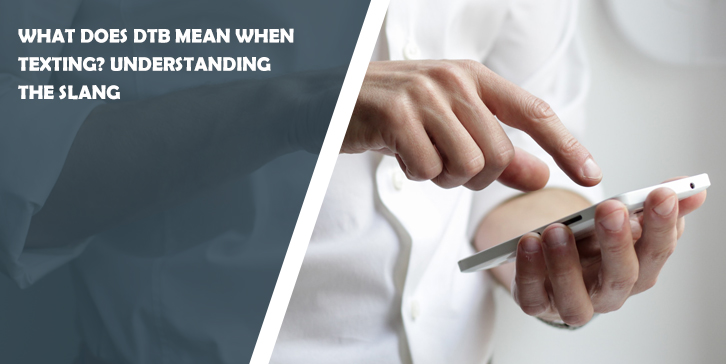In the fast-paced world of texting and instant messaging, new slang terms seem to pop up all the time. One such term that has gained popularity is “DTB,” an abbreviation that stands for “Don’t Text Back.” But what does it really mean, and when is it appropriate to use it in your digital conversations?
If you’re confused by this cryptic combination of letters, don’t worry! We’re here to explain what it means and how it’s used.
What Does DTB Mean?
In the texting universe, “DTB” stands for “Don’t Text Back.” It serves as a concise way to indicate that the sender doesn’t wish to receive a response to their message. This could be due to various reasons, such as being occupied, busy with other tasks, or simply wanting a moment of uninterrupted focus.
At its core, DTB is a succinct way to convey that you don’t want the recipient of your message to reply. It is often used when you find yourself too occupied or unavailable to engage in further texting. Whether you’re busy at work, spending quality time with loved ones, or simply need a moment of undisturbed peace, DTB can serve as a gentle prompt for others not to expect an immediate response.
Appropriate Uses of DTB
DTB can be applied in various contexts, each with its own intent:
- Conveying Busyness: If you’re caught up in a hectic workday or dealing with a series of time-sensitive tasks, using DTB can politely inform the other person that you may not be able to respond promptly.
- Respecting Boundaries: When you’re spending quality time with family, friends, or engaging in an activity that requires your full attention, DTB lets others know that you’re present in the moment and would prefer not to be disturbed.
- Playful Intent: On occasion, DTB can be used playfully, particularly when you want to reach out to someone without creating an obligation for them to respond immediately. It’s a lighthearted way to initiate a conversation without any pressure.
Examples of DTB in Action
Here are some examples of how DTB can be incorporated into your text messages:
- “Hey, swamped with deadlines at work, DTB until lunch break!”
- “Spending the evening with family, DTB for a couple of hours. Talk later!”
- “About to watch my favorite film, DTB until the credits roll!”
Some Tips For using DTB Appropriately
While DTB can be a helpful tool for managing communication, it’s essential to use it respectfully and appropriately. Here are some tips to ensure that you use DTB with care:
- Genuine Busyness: Only use DTB when you genuinely can’t reply promptly. Being honest about your availability fosters trust and understanding.
- Respectful Tone: Maintain a respectful and friendly tone when using DTB. It’s crucial to ensure that the other person doesn’t feel ignored or dismissed.
- Clarity: Be clear about why you’re using DTB. Briefly explain your situation, so the other person knows that your response delay is not a reflection of their message’s importance.
- Playful Intentions: If you’re playfully using DTB, ensure that the other person understands your humor. Emojis or playful language can help convey the lightheartedness of your message.
Conclusion
In the world of digital communication, slang terms like DTB can add fun and efficiency to our conversations.
By understanding the meaning and appropriate usage of DTB, you can employ it thoughtfully in various situations, making your texting experience more enjoyable for everyone involved.
Remember to use DTB responsibly, keeping respect and consideration at the forefront of your digital interactions.

